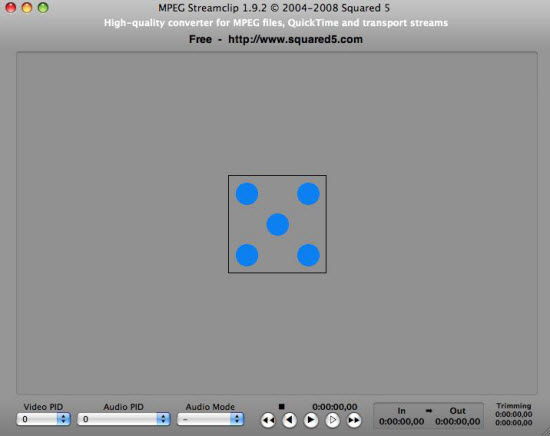

- #Best settings fro mpeg streamclip for final cut pro movie
- #Best settings fro mpeg streamclip for final cut pro pro
I lined up the exported TIFFs as Photoshop layers and generated comparisons by setting the layer mode to “difference”. Had I been comparing video captured through a hardware card, then obviously I would only have uncompressed video files as my cleanest reference images. There are always going to be some changes when a computer file is brought into the video domain, so you can’t fairly judge a compressed video file against the original photo. Furthermore, to be accurate, compression comparisons need to be done against the uncompressed video image, not the original computer still or graphic. The reason is that even “uncompressed” is a media codec. You’ll notice that in addition to various compressed codecs, I also used an uncompressed setting. In this case, choosing “source” gamma matched the Avid roundtrip, whereas using a gamma setting of 2.2 resulted in a darker image exported from FCP.Ĭlick on the above images to see an enlarged view. Depending on the selection (source, 1.8, 2.20, 2.22) you choose, your video in and back out of Final Cut may or may not be identical to the original.
#Best settings fro mpeg streamclip for final cut pro pro
Note that in Final Cut Pro you have the option of controlling the import gamma settings of stills and animation files. For Avid, this means exporting the files with RGB levels (for computer files) and for FCP, using the QuickTime Conversion – Still Image option (set to TIFF). These files were then exported again as uncompressed TIFFs for comparison in Photoshop.

I imported the two stills and placed and rendered them onto timelines using these codecs: Apple 8-bit (uncompressed), ProRes LT, ProRes, ProRes HQ, DVCPRO HD and XDCAM-EX 35Mbps. In Final Cut Pro, the conversion occurs when files are placed on the timeline and rendered to the codec setting of that timeline. In Avid, the conversion occurs during the import stage, so I set my import levels to RGB (for computer files) and imported the stills numerous times in these codecs: 1:1 MXF (uncompressed), DNxHD145, DNxHD220, DNxHD220x, XDCAM-EX 35Mbps and XDCAM-HD422 50Mbps. Step one was to import the images into each NLE. I tested various codecs in both Avid Media Composer 4.0.5 and Apple Final Cut Pro 7. They had good dynamic range and the size reduction in Photoshop added the advantages of oversampling – thus, very clean video images. The two images I chose are of the Donnington Grove Country Club and Hotel near Newbury, England – taken on a nice, sunny day. Digital video cameras often exhibit sensor noise and the footage may not have been captured under optimum lighting conditions, which can tend to skew the results. My reason for doing this instead of using captured video, was to get the best starting point.

These images were originally captured in-camera as 2288-pixel-wide JPEGs in the best setting and then – for this test – converted to 1920×1080 TIFFs in Photoshop. I started with two stills taken with my Olympus C4000Z – a 4MP point-and-shoot digital camera. I decided to test some of these codecs to see the results. (Images from Olympus camera, prior to NLE roundtrip. It’s not a question of whether compression is good or bad, but rather, which codec gives you the best results.Ĭlick on the above images to see an enlarged view.

#Best settings fro mpeg streamclip for final cut pro movie
I frequently use DVCPRO HD for FCP jobs and I recently received an edited segment as a QuickTime movie encoded with the Sony EX codec. Even these camera codecs are being used for intermediate post. Apple and Avid, along with most other NLE manufacturers, also natively support other camera codecs, such as those from Sony (XDCAM-HD, HD422, EX) and Panasonic (DVCPRO HD, AVC-Intra). Each offers several codecs at differing levels of compression, which are often used for broadcast mastering and delivery. codecs.Īvid Media Composer and Apple Final Cut Pro dominate the editing landscape, so the most popular high-end HD codecs are the Avid DNxHD and Apple ProRes 422 codec families. In fact, by the time you see a television program or a digitally-projected movie it has passed through at least three, four or more different compression algorithms – i.e. People like to disparage compression, but I dare say that few folks – including most post production professionals – have actually seen much uncompressed content. Modern digital acquisition, post and distribution wouldn’t be possible without data rate reduction, AKA compression.


 0 kommentar(er)
0 kommentar(er)
